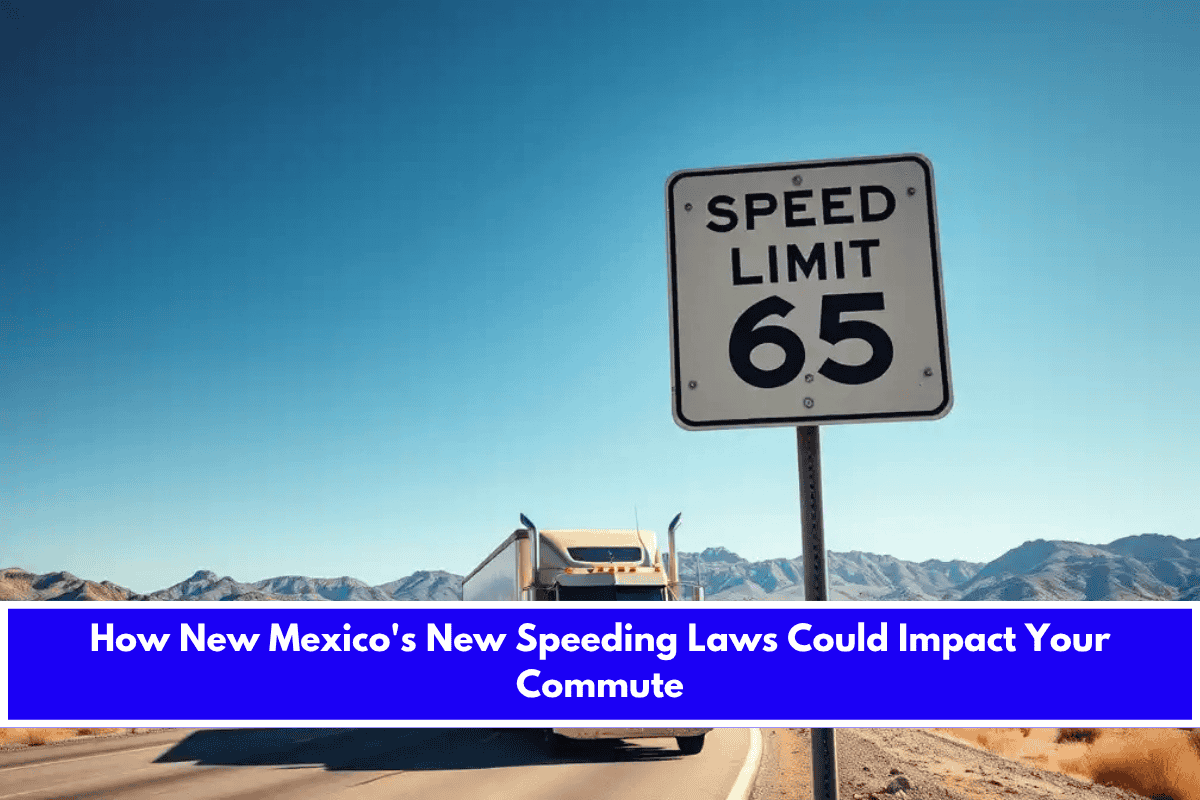New Mexico is on the verge of significant changes to its highway speeding laws, particularly affecting commercial truck drivers and potentially reshaping daily commutes for all drivers.
The proposed legislation, Senate Bill 226 (SB 226), would set a lower maximum speed limit specifically for truck tractors—large commercial trucks used for hauling trailers—while keeping the general speed limit for other vehicles unchanged.
Key Changes and Their Impact
Truck Speed Limit Reduction:
- Current Law: All vehicles, including trucks, have a maximum speed limit of 75 mph on New Mexico’s largest highways.
- Proposed Change: SB 226 would lower the maximum speed for truck tractors to 65 mph on affected roadways, effective July 1, 2025, if passed.
- Penalties: Truck drivers exceeding the new 65 mph limit would face a $250 fine.
Right-Lane Requirement:
- Already in Effect: Trucks are already required to stay in the right-hand lane on multi-lane highways outside of municipalities, except when overtaking or passing another vehicle.
- Purpose: This rule aims to reduce congestion and improve safety by keeping slower-moving trucks out of the left lane, which is reserved for faster passenger vehicles.
How This Could Affect Your Commute
Traffic Flow:
- Potential for Increased Congestion: By creating a 10 mph speed differential between trucks and cars, there may be more instances of cars needing to pass slower-moving trucks, especially on highways with heavy truck traffic.
- Safety Concerns: The Owner-Operator Independent Drivers Association (OOIDA) and some lawmakers argue that speed differentials can lead to more interactions between vehicles, potentially increasing the risk of accidents due to aggressive passing or lane changes.
- Proponents’ View: Lawmakers supporting the bill, like Sen. George Muñoz, argue that reducing truck speeds will help alleviate congestion and improve safety, particularly on busy stretches like Interstate 40.
Enforcement and Compliance:
- New Signs and Education: The New Mexico Department of Transportation plans to install about 700 new speed limit signs and launch a safety outreach program to inform truck drivers of the new rules.
- Revenue from Fines: The state expects to generate additional revenue from speeding tickets issued to truck drivers who violate the new limit.
Uncertainty on Safety Outcomes:
- Mixed Evidence: While proponents believe the law will reduce crashes involving trucks, the Department of Transportation’s analysis notes that the safety benefits are not definitively proven and that speed differentials could have unintended consequences.
Summary Table
| Feature | Current Law | Proposed Change (SB 226) |
|---|---|---|
| Speed Limit (Trucks) | 75 mph | 65 mph (truck tractors only) |
| Speed Limit (Cars) | 75 mph | No change |
| Right-Lane Rule | Trucks stay right except to pass | No change |
| Penalty for Violation | Standard speeding fines | $250 fine for trucks exceeding 65 mph |
| Effective Date | N/A | July 1, 2025 (if passed) |
If SB 226 becomes law, New Mexico commuters could see slower-moving trucks on major highways, which may lead to increased passing activity and potentially more congestion or safety challenges.
However, the law is intended to make highways safer and reduce frustration for drivers stuck behind slow-moving trucks. The ultimate impact on your commute will depend on how truck drivers adapt to the new rules and how well the changes are enforced.
Sources:
- https://landline.media/new-mexico-speed-limit-differential-bill-advances/
- https://truckdrivernews.com/new-mexico-truck-speed-limit-controversial-law-in-the-works/
- https://www.nmlegis.gov/Sessions/25%20Regular/firs/SB0226.PDF
- https://landline.media/speed-limit-car-truck-differential-changes-pursued-in-12-states/












Leave a Reply